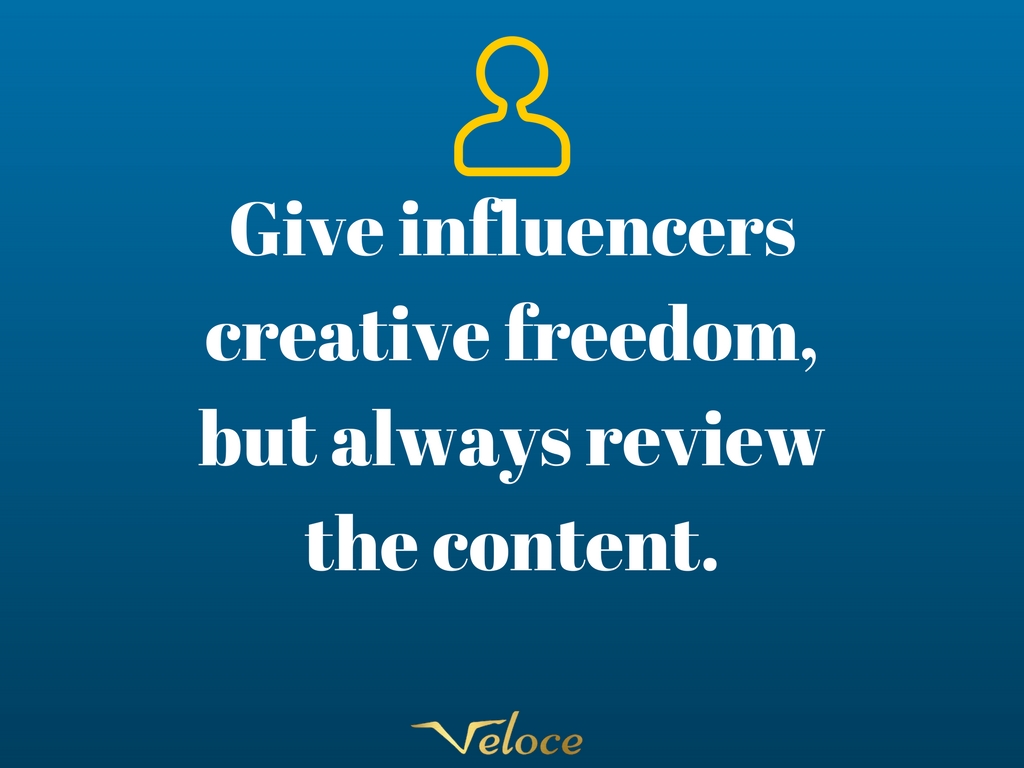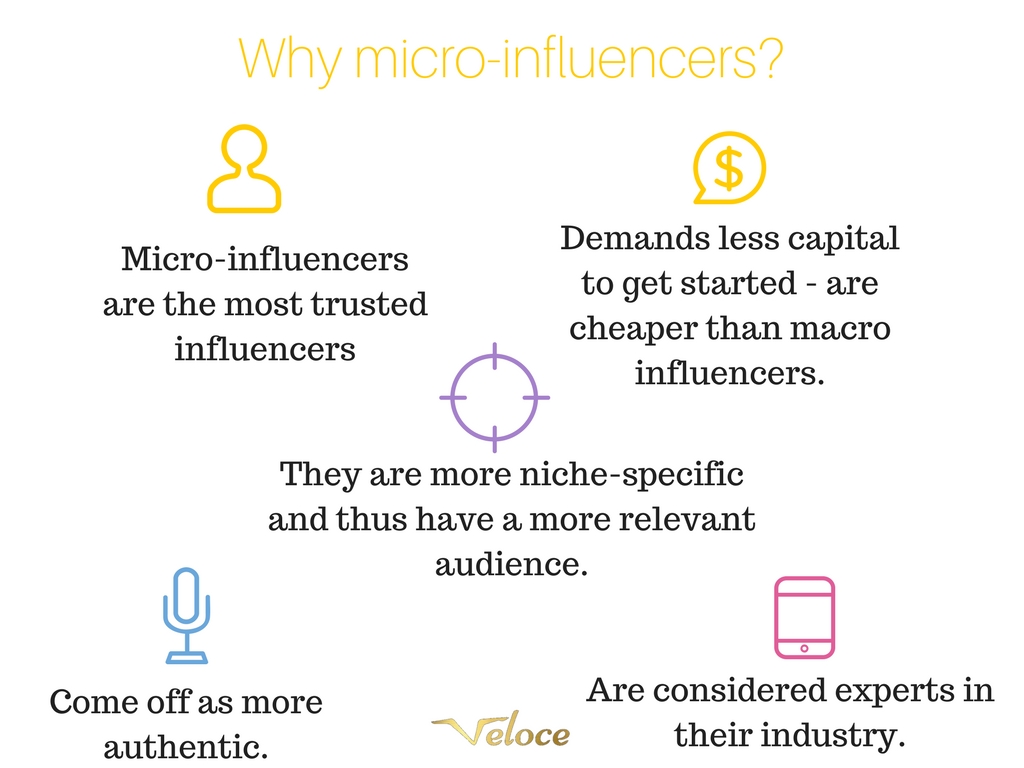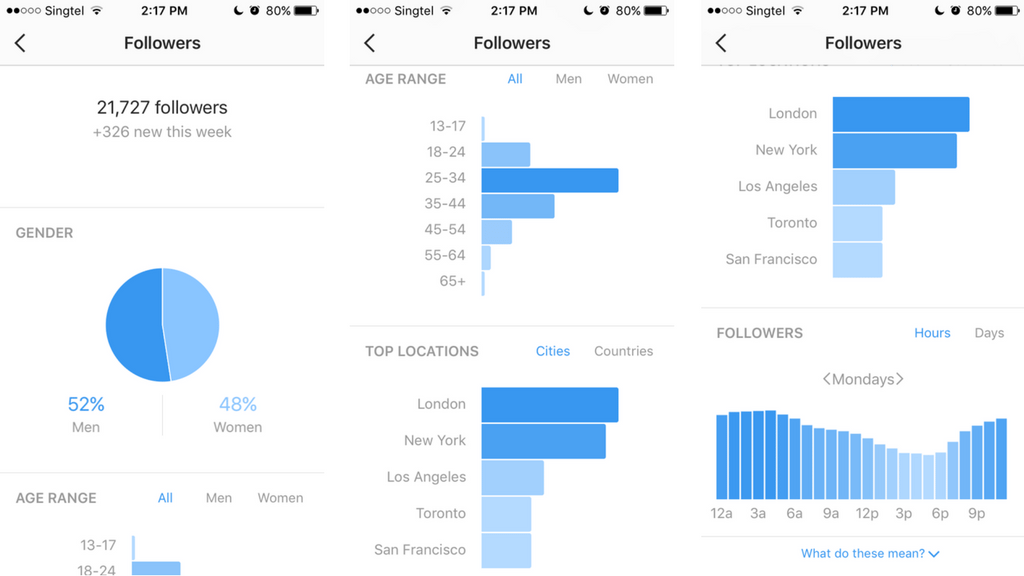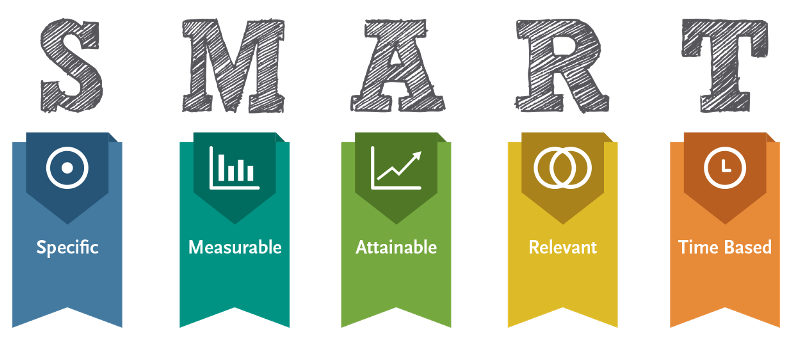Are you committing any of these common 15 influencer marketing mistakes?
Or are you even aware that they exist?
I am sure you’ve quite familiar with influencer marketing by now, so I’ll skip the introduction of telling you just how powerful influencer marketing and cut straight to the point.
As you know, influencer marketing can generate great results and has shown for a tremendous ROI, but as Gary Vaynerchuk says:
“What’s the ROI of a basketball?
For me, it’s zero.
For Lebron, it’s billions”.
The same goes for influencer marketing. Almost all marketing methods can generate great results, but they can also generate terrible results. It’s all about how you use it. If you don’t know how to use and execute influencer marketing properly, you won’t generate very good results, and you’ll most likely commit a lot of mistakes on the way.
Here’s the problem: mistakes are crippling your success. Heck, they can even cost you millions of dollars.
In this article, we’re looking at 15 Deadly Mistakes Of Influencer Marketing to Avoid
1.Not having a plan
Having a plan is crucial for all marketing efforts and not just for influencer marketing.
The problem many brands are facing today is that they see the incredible results influencer marketing drives, and then they hop on it as soon as possible, without having developed a plan and strategy on how they’re going to work with it in order to get the best results.
And doing so means setting up yourself for failure.
Before hopping into influencer marketing, you need a clear plan on how you’re going to run your campaigns, and what goals you have.
Set goals according to the SMART, formula, and make sure both you and the influencer works towards the same objectives and that you’re both on the same page.
2. Not setting goals
Having goals is part of the detailed plan you create, however, there’s a difference between campaign goals and overall goals.
Your overall goals with influencer marketing might be to increase brand awareness, for example, but if you zoom in and focus on one campaign, the goal of that campaign might be to increase your follower count by X number of followers. Because when you increase your follower count, you can reach people over and over again, which means you increase brand awareness.
Before going into an influencer campaign, you need to have set a specific goal for that campaign, because doing so allows you to evaluate at the end of the campaign if it was beneficial for your brand.
What’s more, having set goals allows you to more easily measure the total results from all your influencer marketing efforts in the end.
3. Only focusing on follower count
According to me, this is one of the most harmful mistakes you can make in influencer marketing, and unfortunately, a lot of marketers and doing it.
When looking for influencers to partner with, all they do is look at the number of followers an individual has on social media. Then defines that as their true “influence”.
Because, the more followers, the better, right?
No.
The fact is that it’s not quite that simple.
There are so many other things that impact how well an influencer campaign will perform. Follower count is just a small part of it.
For instance, if all the followers of the influencer are fake, do you think you’ll generate any results?
What about if the influencer has a lot of followers their engagemen tis close to non-existent, with people who just do not care about what they post?
The key to generating great results with influencer marketing is engagement. How engaged is the followers of the influencer in what they are posting? Because only this will affect how the followers are impacted and influenced by whatever the influencer is trying to communicate.
Follower count is binary as it only theoretically tells how many people you have the potential of reaching. But what truly matters is engagement, as well as several other factors that I’ll go into detail of further on.
The idea of social media is that popularity is measured by the number of followers, and that’s a huge misconception.
Buying fake followers is easier than ever, and if all you look at is the follower count of the influencer, you are doomed to fail. You also risk wasting your whole influencer marketing budget on people who will do nothing for your brand.
3. Believing you have full control over the influencer
Just because you pay the influencer doesn’t mean that you own them.
This is, unfortunately, a common mistake brands make that goes hand-in-hand with trying to keep full control over the campaign with what the influencer is going to say, how they’re going to say it, and how they are going to create the content.
The problem with this is that the campaign comes off as inauthentic, and the audience of the influencer who knows the true personality and voice of the influencer can instantly recognize that those aren’t the words of the influencer, but the words of the brand.
And when that happens, not only will the influencer lose trust, the campaign will come off as inauthentic and the campaign’s results will be thereof.
I often recommend brands to give influencers creative freedom, but always review the content.

The reason?
The reason is exactly the same as why you should not believe you have full control over the influencer.
The influencer has built their audience of loyal followers and fans from the ground up, and they know exactly what they find interesting, what sparks their interests, and what they like.
You as a brand know very little about that, and therefore, the influencer campaigns where the brand is the one who creates the content and the creative are often highly unsuccessful.
It’s easy to understand why brands want to take care of all aspects of the campaign, because they want to feel like they’re in control, and ensure that everything is done just the way they want. But this time, the influencer actually knows better than you, so don’t try to run the campaign, give the influencer freedom and let them do their thing, and then review the content so that it resonates with your brand before they post it.
That’s it!

4. Ignoring FTC rules
The FTC is the Federal Trade Commission, and according to US law, you have to clearly disclose when a post is a paid endorsement.
Back in the days, close to no influence disclosed that they were being paid for the endorsement, but after the FTC cracked down on several top influencer and celebrities, the promotional posts on social media have become much more transparent.
Inf act, platforms like Instagram has included a “paid promotion feature” that clearly states that the post is paid.
According to the changes in the US Federal Trade Commission’s rules for endorsements, failing to identify which posts are sponsored or act as an endorsement could lead to a lot of trouble.

Therefore, you as a brand should give the influencer instructions on how the influencer is going to label the endorsement in order to be in line with the FTC’s instructions.
This is what they say:
“From the FTC’s perspective, the watchword is transparency. An advertisement or promotional message shouldn’t suggest or imply to consumers that it’s anything other than an ad.
Some native ads may be so clearly commercial in nature that they are unlikely to mislead consumers even without a specific disclosure. In other instances, a disclosure may be necessary to ensure that consumers understand that the content is advertising.”
You might think that if the rules aren’t obeyed, the influencer is the one who will be held responsible, but it is actually the business that will be.
5. Not looking at micro-influencers
As the idea that “the more followers the better” lives on, many brands neglect micro-influencers – individuals on social media with a following smaller than 100K, yet still have a highly engaged and target audience.

But those brands that are working with micro-influencer are seeing amazing results.
I mentioned earlier that follower count doesn’t necessarily matter, and this is something that micro-influencers prove.
Because the thing is: as follower count increase, engagement tends to drop. And after all, engagement is what is important!
Since micro-influencers have a much more targeted audience that is engaged in what they are sharing, they can often generate incredible results. Just look at these statistics:
- 82 percent of consumers are highly likely to follow a recommendation made by a micro-influencer.
- Micro-influencers have up to 22.2 percent more buying conversations.
- Influencers in the 10k-100k follower range offer the best combination of engagement and broad reach.
And the best part is that most influencers base their price of endorsement on their follower count, so partnering with micro-influencers is a lot cheaper than large influencers – even though micro-influencer marketing actually can generate better results. It’s just that you have to partner with multiple of them in order to reach the same number of people.
Since the engagement rate tends to be higher with micro-influencers, you risk paying more by partnering with one large influencer than you do if you partner with multiple micro-influencers. This means that when done right, you get more bang for your buck with micro influencers.
6. Only using one social platform
A mistake that some brands do is that they only work with influencer marketing where they have their strongest presence.
This, in turn, can make marketers solely focus on one platform when it comes to influencer marketing.
Only promoting on one platform prevents you from reaching different groups of people that are spending time on different platforms. Understand that different parts of your target audience may spend time on different social media platforms, and this is why you need to first carefully research your target audience and their behaviour on social media platforms.
Of course, you always opt for what feels comfortable and familiar but try expanding your influencer marketing to a new platform where you know people from your target audience spends time.
7. Paying influencers straight up
Some marketers believe that the only way to get influencers to promote them is by paying them cold hard cash.
But the truth is that that is not always the case.
In fact, the influencer might already be in love with your products and use them every day without you knowing. This would not only mean that if you’d approach them, they’d be thrilled to partner with you, as they are already a huge fan of your brand, it would also mean that the campaign would come off as highly authentic, because the influencer has been using your products even though they weren’t paid for it. In fact, they paid to use your products.
Plus, when influencers have used your products, it gives them stories to tell, and allows them to speak from their heart about their own experiences on why they have been using your products.
Most importantly, though, is that if they are engaged in your brand and are genuine fans of your brand and products, paying them with free samples might well be enough, This is especially true for micro-influencers that often accept product samples in exchange for promotion if they genuinely like the products.
8. Not researching the influencer
The foundation for setting up your influencer campaign is obviously finding an influencer to partner with.
I’ve already gone through the fact that follower count isn’t the only thing that matters, however, before partnering with them, you also want to do a bit more research.
Finding the right influencer for your brand is a tricky task. At the same time, it is also the most crucial one, as the influencer you partner with will have the greatest effect on how well the campaign performs.
Related: 5 Key Tips To Choosing The Right Influencers
The thing is: there are more criteria you want to look at other than their engagement and follower count before partnering with an influencer.
Remember that when you partner with an influencer, that influencer becomes an extension of your brand and a face towards the public for your brand that is going to represent your brand.

This puts great importance of partnering with influencers who resonate with your brand and are aligned with your brand’s values.
9. Expecting instant results
Nothing worth having comes easy, and nor do the results from influencer marketing,
Influencer marketing should be viewed as a tool to help you achieve your overall social media objectives and not a method to drive instant results.
Influencer marketing can drive short-term results. For example, increase your follower count. But the key benefits of influencer marketing come from helping you establish a strong presence both on social media, but also a strong brand presence and brand awareness.
I could spend all day bringing up all the benefits that come from social media because there are so many different marketing metrics that influencer marketing generates results for. At the same time, when marketers only focus on one or two, they neglect the big picture and don’t realize just the immense results it truly generates.
You can explore all the different metrics often forgotten in the linked article below:
Related: How to prove and measure the results of brand awareness on social media
10. Failing to measure results
As mentioned at the beginning of this article, setting goals allows you to measure results better, however, setting goals means that you actually have to measure the results.
If you aren’t measuring the results of the influencer campaigns, you will never be able to know what works, what doesn’t, what is harming you, and what is the most effective.
By measuring the results, you’ll be able to know which strategies are generating the best ROI, and which influencers are performing the best.
All of that and a lot more can be extracted by simply measuring and evaluating the results from your campaigns.
When setting goals, the most important thing is that your campaign helps you achieve your goal.
After all, the reason you set goals is to achieve them, right?
Of course, some metrics are harder to measure than others. For example, your goal might be to increase brand awareness and to drive more sales. The sales metric is a lot more tangible than measuring brand-awareness, because how do you do it?
Well, it can be done, but it is a lot harder than just looking at how much your sales have increased.
Measuring the effectiveness of an influencer marketing campaign is less intuitive than other marketing initiatives. Metrics like “brand awareness” are, after all, less tangible than leads or revenue generated.
For measuring results, there are tons of good tools out there that you can use. Platforms like Instagram and Twitter have built-in analytic tools that work surprisingly well. Best of all is that they are free.

and not too long ago, Instagram introduced a feature that allows brands to look at the performance statistics of the post of the influencer if they have used Instagram “paid promotion” disclosure, and tagged you as a partner.

Evaluating the results from influencer marketing is an art itself, and if I’d go through it all, we’d be here all day.
Therefore, I advise you to read this article instead: How to Measure Results and ROI of Social Media
11. Not knowing the audience of the influencer
Another aspect you want to look at when partnering with an influencer is their audience. Sure, the follower count isn’t as important as things like their engagement, however, what is greatly important is who is actually hiding behind the follower count of the influencer?
Different influencers have different target audiences, and it is crucial that you find an influencer whose following is your target audience.
Obviously, you don’t want to partner with an influencer whose followers are into snowboarding when you are trying to sell skis.
12.Not communicating what your brand has to offer
In an influencer campaign, it is important to get the message through of what it is you are offering.
It is also important that you do it quickly because people’s attention on social media is very short.
If you fail to present what your brand has to offer, you’ll miss out on people who could have been customers but didn’t realize what your value proposition was.
13. Running one-time partnerships
Most of the influencer partnerships we see are one-time partnerships.
This means that the brand approaches the influencer, asks them if they can promote them, pays for a post, the influence makes a post, and then the partnership has ended.

This tactic does work, however, in getting the most out of your influencer marketing efforts, it’s not a good strategy.
The truth is that you’ll generate far greater results with long-term partnerships.
The problem with the companies that do this is that they always think that the grass is greener on the other side. Now, am I saying that you should pick one influencer and then stick with them even if they generate lousy results?
Absolutely not. I am saying that you should enter all influencer partnerships with the mindset that it is going to be a long-term partnership.
If you do this with several influencers, you’ll be able to identify the ones that are performing best, and are the best matches for your brand. In other words, the individuals that resonate best with your brand, and thus are the best ambassadors. And when you have done so, you want to double-down on them.
When you partner with an influencer long-term, the promotions they do for your brand will be more trustworthy, as they stay true to their recommendations, and not start promoting a completely different brand shortly thereafter.
14. Believing that influencer marketing is only for B2C
The majority of brands that use influencer marketing are B2B, and as a result, that has led many brands to believe that influencer marketing isn’t for B2B, or can’t benefit businesses in the B2B space.
There are many examples of businesses that have used influencer marketing and gained tremendous success from it.
For instance, American Express wanted to make its storefront decals a bit more aesthetically appealing to encourage store owners to use them, and therefore, they launched the “Love My Store campaign” where they partnered with the influencer Grace Bonney. Bonney designed six new storefront decals to appeal to small business owners, as well as created a tv series with the HGTV personality Emily Henderson that taught small businesses how to use their storefronts and merchandising to attract customers.
15. Leading people to a poorly optimized website
You should never paint a roof with water damages just to hide it.
The same principle goes for influencer marketing.
Many of the brands that use influencer marketing work to lead the people to their website in order to get them further down their sales funnel and ultimately convert.
But if the website is poorly optimized, people will leave in a matter of seconds.
In other words, if you want to increase your traffic and ultimately get more customers, start at the right end and begin by optimizing your website. When the visitors have a good user experience, that’s when they are most likely convert.
According to Google, after 1 to 5 seconds of loading time, the probability that a visitor bounces is 90%.

This means that if you use influencer marketing to drive traffic to your website, and then have a terribly poorly optimized website that offers a bad user experience, you’ll be throwing money in the garbage.
And remember, the vast majority of people who will visit your website as a result of an influencer promotion will be mobile users, so if your website isn’t optimized for mobile, you’re in trouble.
Conclusion
In influencer marketing, there are a lot of benefits. But remember that influencer marketing is just like any other marketing strategy, which means that if it isn’t executed properly, you won’t reach the potential you have the chance of reaching.
There are also many pitfalls and influencer marketing mistakes that you can commit that you want to be aware of. The first step is being aware of the pitfalls of influencer marketing because this will save you a lot of time and money.



